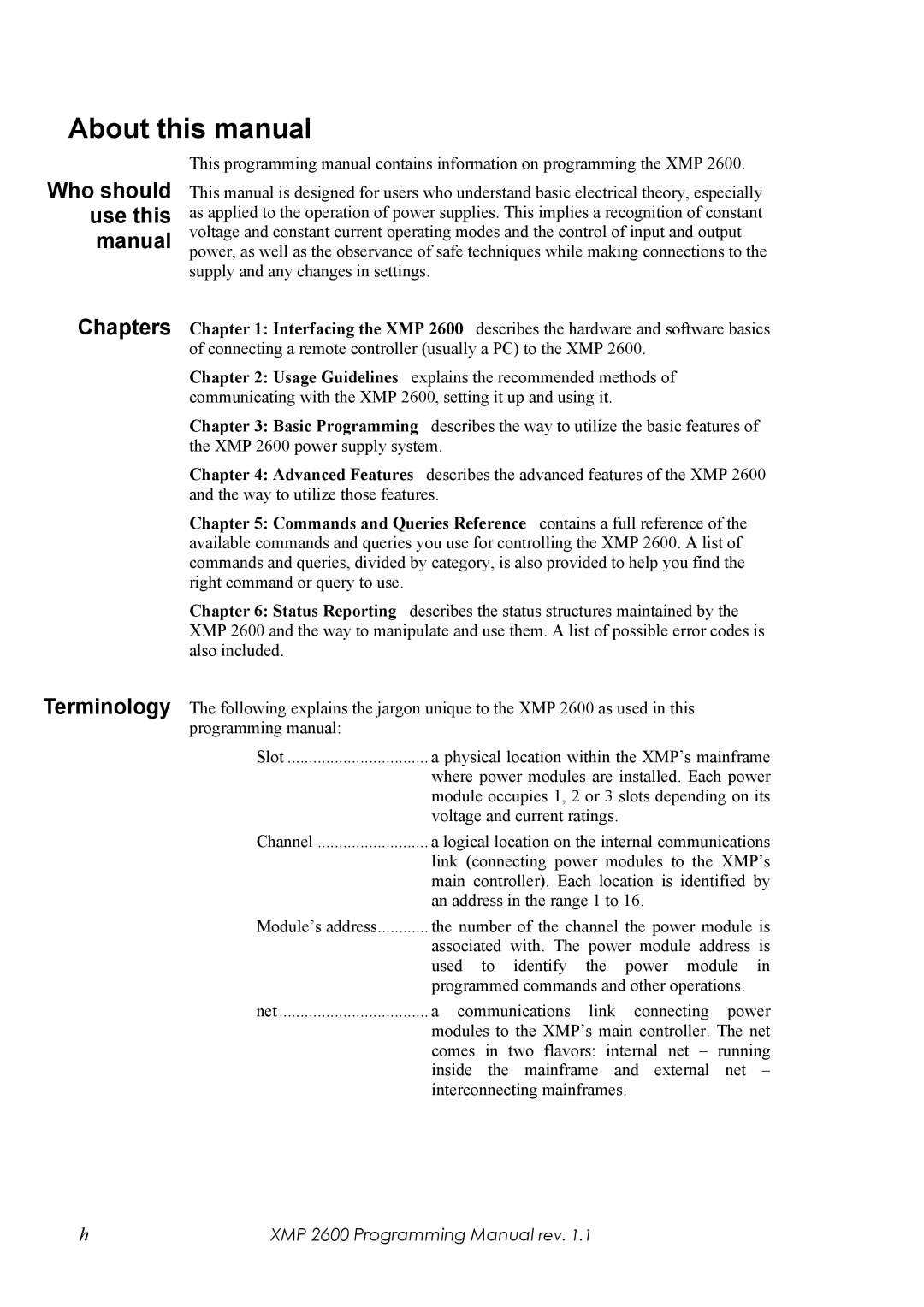About this manual
Who should use this manual
Chapters
Terminology
This programming manual contains information on programming the XMP 2600.
This manual is designed for users who understand basic electrical theory, especially as applied to the operation of power supplies. This implies a recognition of constant voltage and constant current operating modes and the control of input and output power, as well as the observance of safe techniques while making connections to the supply and any changes in settings.
Chapter 1: Interfacing the XMP 2600 describes the hardware and software basics of connecting a remote controller (usually a PC) to the XMP 2600.
Chapter 2: Usage Guidelines explains the recommended methods of communicating with the XMP 2600, setting it up and using it.
Chapter 3: Basic Programming describes the way to utilize the basic features of the XMP 2600 power supply system.
Chapter 4: Advanced Features describes the advanced features of the XMP 2600 and the way to utilize those features.
Chapter 5: Commands and Queries Reference contains a full reference of the available commands and queries you use for controlling the XMP 2600. A list of commands and queries, divided by category, is also provided to help you find the right command or query to use.
Chapter 6: Status Reporting describes the status structures maintained by the XMP 2600 and the way to manipulate and use them. A list of possible error codes is also included.
The following explains the jargon unique to the XMP 2600 as used in this programming manual:
Slot | a physical location within the XMP’s mainframe |
| where power modules are installed. Each power |
| module occupies 1, 2 or 3 slots depending on its |
| voltage and current ratings. |
Channel | a logical location on the internal communications |
| link (connecting power modules to the XMP’s |
| main controller). Each location is identified by |
| an address in the range 1 to 16. |
Module’s address | the number of the channel the power module is |
| associated with. The power module address is |
| used to identify the power module in |
| programmed commands and other operations. |
net | a communications link connecting power |
| modules to the XMP’s main controller. The net |
| comes in two flavors: internal net – running |
| inside the mainframe and external net – |
| interconnecting mainframes. |
h | XMP 2600 Programming Manual rev. 1.1 |
